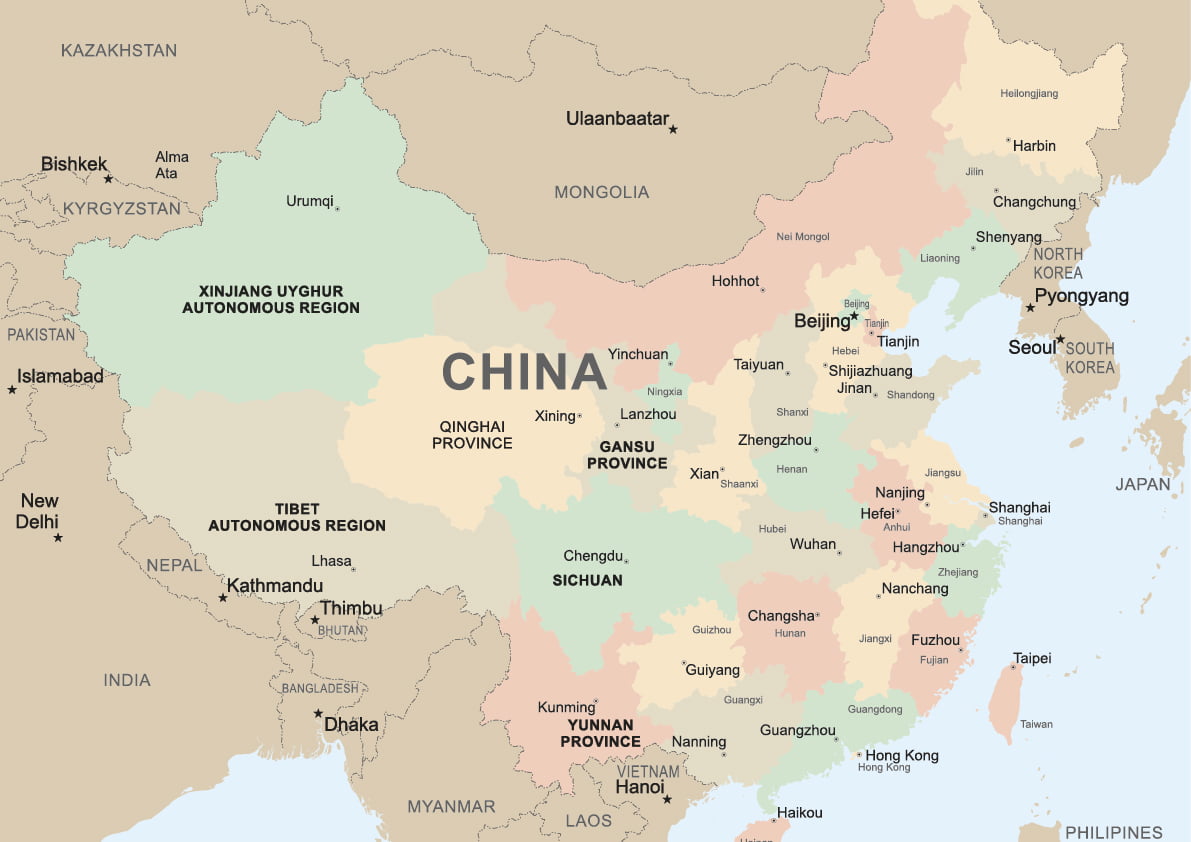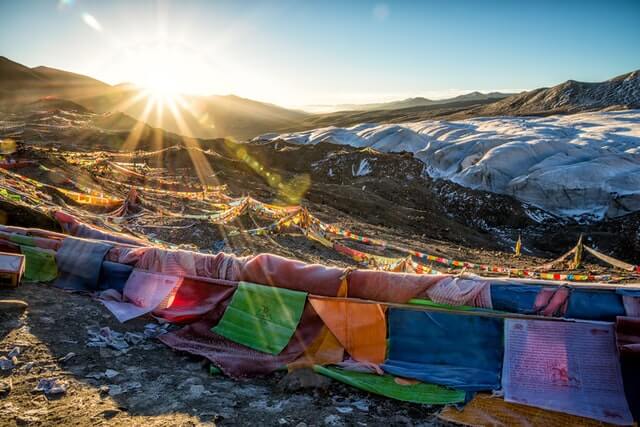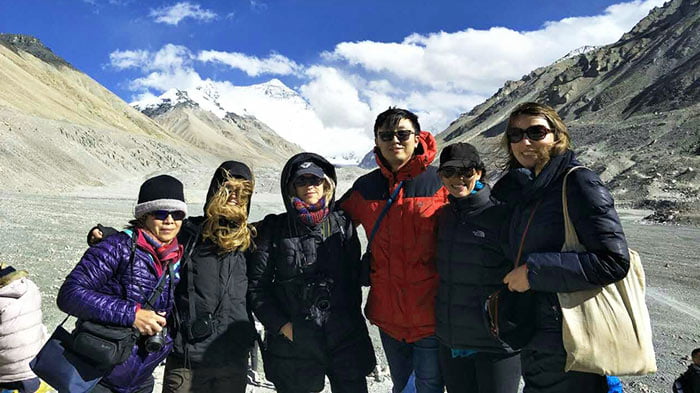For the people in Tibet, religion is very important and shapes many aspects of the life. The dominant religion, Tibetan Buddhism, has blended many pre-Buddhism shamanic and animist beliefs into the current religion. These animist features make Tibetan people worships many snow-capped mountains and lakes. They believe the mountains and lakes are dwellings for deities and rocks have spirits. Pilgrimages circling around these sacred mountains and lakes are believed to cleans the sins thus are journeys from ignorance to nirvana. For this reason, you can see many people circling around these sacred places throughout the year.
NO. 5 Ranwu Lake
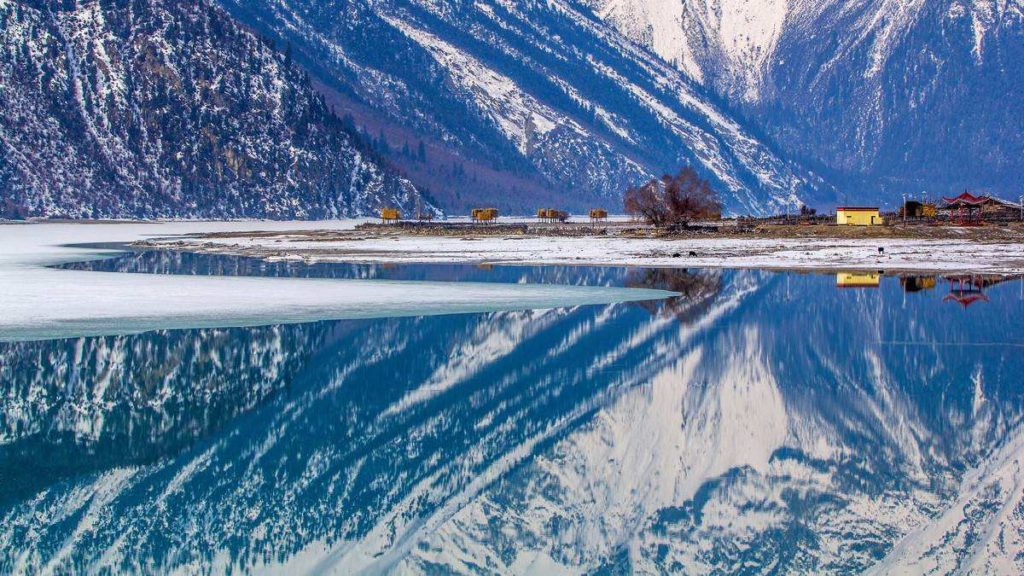
Ranwu Lake is the largest lake in eastern Tibet, covering an area of 8.5 square miles (22 square kilometers). The lake is divided into upper, middle and lower parts. These are indeed three lakes connected by streams. It is known for its tranquil and colourful water. The lake is also famous for its flowers in the spring and the beautifully coloured trees in the autumn.
NO. 4 Basum Tso Lake
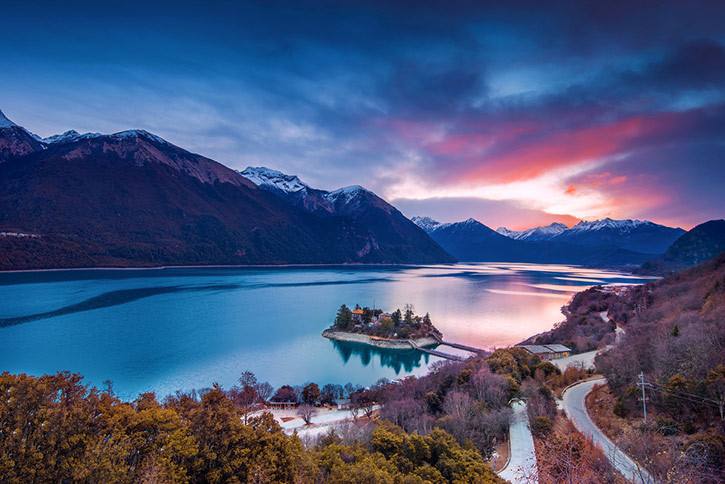
Basum Lake is like many other lakes in Tibet is surrounded by snow-capped peaks. But unlike many others, the lake is also surrounded by a natural forest. This is the largest barrier lake in the north of Tibet and it is like a Small Switzerland in Tibet.
NO. 3 Lake Manasarovar

Lake Manasarovar (meaning “the Immortal Lake of Jade”), according to Buddhist, is the holiest lake (this freshwater lake is in fact not only sacred for Buddhist but also for Hindus, and Jains). Lake Manasarovar, the Mother of the Holy Lakes, is the lake in which a great Tibetan monk saw the letters “Aha”, ” Kha”, ” Mha” and these initials helped the search team to locate the current the 14th Dalia Lama of Tibet.
Lake Manasarovar is an important pilgrimage for Buddhists and Hindus. For Hindus, Lake Manasarovar is a personification of purity. One who drinks water from the lake is believed to be cleansed from sins of 100 lives. Besides itself is important, Lake Manasarovar is also near Mount Kailash, which is according to Hinduism, Tibetan Buddhism and Jainism, centre of the world (the lake is 2,000 kilometers away from Lhasa, located at the southern foot of Mount Kailash).
The lake is also the source of four great rivers in Asia, namely the Indus, the Sutlej, the Karnali and the Brahmaputra.Lakes crystal clear waters are blue near the shores and emerald green at the centre. It is in an area named Ngari (in the west of Tibet). This is the horizon of the sky for Tibetans.
NO. 2 Namtso Lake

Surrounded by snow-capped mountains and open grassland, dotted with yak herds and local nomads, Namtso Lake (Heavenly Lake) is the largest lake in the Tibet. This saltwater Lake is also the highest saltwater lake in the world. The lake has a magnificent view of the surrounding mountains over its turquoise waters and especially offers fantastic sunrise and sunset view.
Namtso Lake has five uninhabited islands of reasonable size. Like the hills around the lake, these islands have been used spiritual retreat by pilgrims who walk over the lake’s frozen surface at the end of winter.
Namtso is one of the holy lakes and like Yamdrok Tso Lake is one of the four “Great Wrathful Lakes” guarded by the goddess Dorje Gegkyi Tso (the other two are Lhamo La-tso and Manasarovar). Dorje Gegkyi Tso is one of the twelve goddesses who are believed to be the worldly protector according to Tibet Buddhism. The lake is said to have descended from the heavens to earth. According to the legend, Namtso is the daughter of god Indra (a guardian deity in Buddhism, and the king of first heaven) and the wife of Nyenchen Tanglha.
It is believed that if one walks around the lake once during the year of the sheep (last one was in 2015), he and his family will be blessed with health, knowledge and good fortune.
NO. 1 Yamdrok Tso Lake
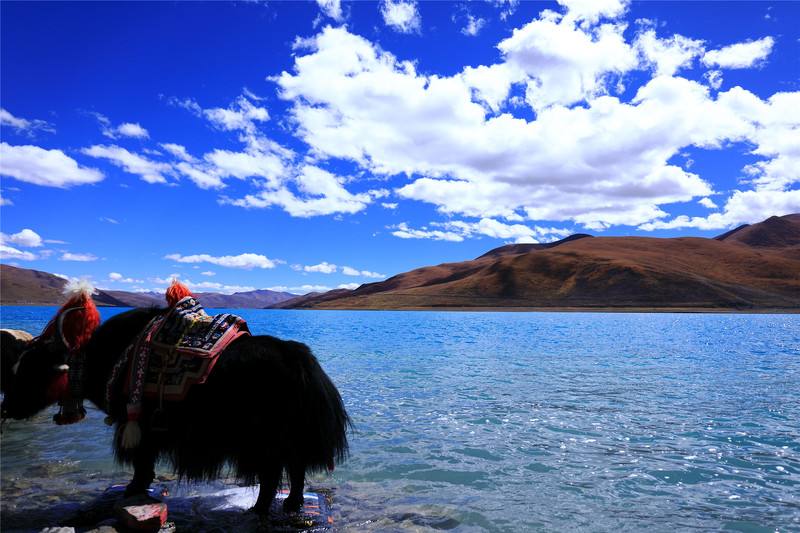
Surrounded by dull grey and green mountains, Yamdrok Tso Lake is one of the three largest sacred lakes in Tibet. This 72 km (45 mi) long fresh water lake is surrounded by many snow-capped mountains and is fed by numerous small streams.
Yamdrok Lake is one of the four “Great Wrathful Lakes” guarded by the goddess Dorje Gegkyi Tso. This lake is so important that according to the Tibetan belief, if it dries, Tibet will no longer be habitable.
The lake, its islands and surrounding area is associated with the second Buddha, Padmasambhava, who brought Buddhism to Tibet in 8th century.
Yamdrok Lake is a very beautiful lake with blue waters surrounded by snow-capped mountains. The lake is on Friendship Highway S307 (the highway connecting Nepal to Tibet) and you can have a panoramic view of the lake from the road.
Samding Monastery is on a barren hill about 90 metres (300 ft) above the lake at the neck of a narrow peninsula jutting out into the water. This monastery is where the third highest lama in Tibetan Buddhism is said to have been reincarnated for hundreds of years. This is also the only Tibetan monastery to be headed by a female re-incarnation.

